Snapshot
The Muthurajawela Wetlands is a coastal wetland which together with the Negombo lagoon to the immediate north forms a biodiverse eco system home to a variety of Sri Lanka’s wildlife.
Duration: 2 hours
Best Time: September to April
Additional Information
Boat safaris in the Muthurajawela wetlands are a major attraction for holiday makers in Negombo. Numerous bird species can be observed. Crocodiles occur and large water monitors are seen quite frequently.
The Muthurajawela Marshes cover an area of approximately 6,000 hectares, inclusive of the Negombo lagoon. The daily high tide brings in seawater from the ocean into the wetland, and the continuous mixing of these two waters over thousands of years has led to a brackish, integrated coastal ecosystem that is biologically diverse and teeming with life.
A variety of mangroves and other types of flora including medicinal plants are found alongside numerous types of birds, butterflies and fish, some of which are endemic. Crocodiles, monitor lizards, and Sri Lanka’s largest snake, the python, are also native.
The mixture of vegetation types and aquatic habitats in Muthurajawela has made it an ideal eco-zone for a variety of birds. As many as 102 species of the birds in Sri Lanka are found here, including one endemic and 19 migrants. This is also a very important breeding habitat of many aquatic birds. In the wetland eco-system, herons, egrets, cormorants, lapwings, teal, waders and kingfishers are found here. Birds of prey include kites and sea eagles. Many forest birds also can be seen in Muthurajawela including doves, cuckoos and parakeets. Migrants include bee-eaters and fly-catchers.
Amphibians consists of 14 species including 4 endemics, 5 which are nationally endangered and represents 26% of the total amphibian species on the island. There are also 31 species of reptiles – 20% of the island’s reptile species – including the water monitor, common garden lizard and two species of geckos. There is a breeding population of the endangered Eurasian crocodile, the largest reptile in Muthurajawela. Other reptiles found are pythons, cobras and vipers.
Flora
Muthurajawela harbours over 194 species of Flora distributed over seven major vegetation types which includes marsh, lactic flora, shrub land, reed, swamp, grasslands, stream bank and mangrove forest. A total of 194 species of vegetation belonging to 66 families have been recorded which include one endemic species (Phoenix zelanica). Among the different types of vegetation, the shrub land consists of 115 species with the mangrove forest and stream bank consisting of just 23 species each. Due to the high level of human activity within the sanctuary, the flora composition at Muthurajawela seems to be changing rapidly.
Fish
40 species of fish have been recorded which is 45% of Sri Lanka’s native inland fish species and includes 5 endemics, 5 nationally endangered, and 4 exotic species. The Thilapia (Sarotherodon mossambicus),Pearl Spot (Etroplus surantensis) and the Dwarf Panchax (Aplocheilus parvus) are among the very common species found at Muthurajawela. The fish species also include freshwater and marine migratory species that migrate from fresh to marine habitats for reproduction. These species include the Level-finned Eel and the Marine species Red Snapper, Big-eye Trevally, Common Glass fish, Tarpon and Silver Bleddy that move into the brackish water for spawning.
Amphibians and Reptiles
Amphibians consists of 14 species including 4 endemics, 5 which are nationally endangered and represents 26% of the total amphibian species on the island. The Common Toad and the Six-Toed Green Frog are the most common species found here. There are also 31 species of reptiles – 20% of the island’s reptile species – including 6 endemic species and 9 which are nationally endangered. The most common reptiles which are seen are the water monitor, common garden lizard and two species of geckos. The star tortoise is also found here which is not regular as it is known to be a dry zone species. A breeding population of the endangered eurasian crocodile, the largest reptile in Muthurajawela. Other reptiles found are the Indian Python, Spectacle Cobra and Russell’s Viper.
Mammals
Of the 22 mammals found at Muthurajawela, one is the globally-threatened grey slender loris. Another is the fishing cat.
Birds
102 species of the birds in Sri Lanka are found here, including one endemic and 19 migrants. The mixture of vegetation types and aquatic habitats in Muthurajawela has made it an ideal eco-zone for a variety of birds. In the wetland eco-system Herons, Egrets, Cormorants, Teal, Waders and Kingfishers are found here. This is also a very important breeding habitat of many aquatic birds. Some of the wetland birds include Little and Indian Cormorant, Cattle, Little, Intermediate & Large Egrets, Purple Heron, Indian Pond Heron, Little Green Heron, Black-crowned Night Heron, Black Bittern, Yellow Bittern, Chestnut Bittern, Black-headed Ibis, Asian Open-bill, Little Grebe, Lesser Whistling Teal, Pheasant-tailed Jacana, White-breasted Water hen, Purple Swamp hen, Water Cock and Common Moorhen.
Some of the migrants and waders include Whimbrel, Eurasian Curlew, Common Sandpiper, Curlew Sandpiper, Marsh Sandpiper, Pintail Snip, Gull-billed Tern, Whiskered Tern, Little Tern and Lesser Crested Tern. Resident waders include the Red-wattled Lapwing, Greater Painted Snip and the Eurasian Thick-nee. Among the Kingfishers, White-throated, Stork-billed, Common and Pied Kingfishers are regularly seen here. The Black-capped Kingfisher, a rare winter migrant, has been recorded here.
Birds of prey include the Shikra, Brahaminy Kite, White-bellied Sea-eagle and the migrant Western Marsh Harrier and Palled Harrier have been recorded. Many forest birds also can be seen in Muthurajawela. The migrants include Indian Pitta, Blue-tailed Bee-eater, Asian Paradise Flycatcher, Asian Brown Flycatcher, Greenish Warbler, Brown Shirke, Forest and Grey Wagtail. Resident forest birds include are Spotted Doves, Sri Lanka Green Pigeon, Blue-faced Malkoha, Pied Cuckoo, Rose-ringed Parakeet, Alexandrian Parakeet, Little Minivet, Plain Prinia, White-rumped and Scaly-bellied Munia, White-bellied Drongo, Red-vented Bulbul, Common Iora, Jungle and House Crows are very common and seem to be the dominant species.
Butterflies And Dragonflies
48 species have been recorded here, none of which are endemic but 6 of which are nationally endangered. The most common butterflies are the blue glassy tiger, glassy tiger and tailed jay butterflies.
Related Activities
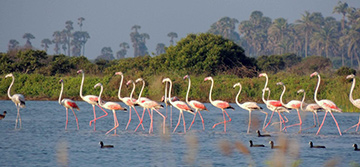
Birdwatching in Jaffna
Jaffna, Sri Lanka
Bird watching in Jaffna during the migrant season from September – March is a highlight for nature lovers. Migrant birds along with other waders in their thousands flock to the lagoons.
Duration: 4 hours
Best time: September to March
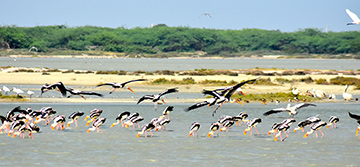
Birdwatching on Mannar Island
Mannar, Sri Lanka
Mannar Island, one of the most lightly-visited areas of Sri Lanka, is one of the best spots in the island for spotting migratory birds, as well as other animal species.
Duration: 4 hours
Best time: November to February

Bundala National Park
Bundala national park, bundala, Sri Lanka
Bundala National Park, which neighbours Yala, is one of the best places for birdwatching in Sri Lanka, and is also home to sloth bears, elephants and deer.
Duration: 4 hours
Best time: September to March
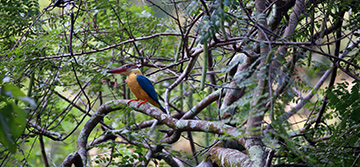
Kalametiya Bird Sanctuary
Kalametiya Bird Sanctuary, Hambantota, Sri Lanka
Kalametiya Bird Sanctuary is a beautiful, mellow spot with just you and a boatman punting a boat around the lagoon.
Duration: 4 hours
Best time: November to April
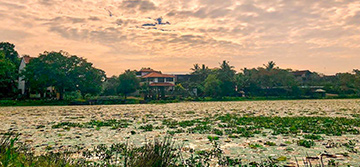
Talangama Wetlands
Talangama Wetlands
The Talangama Wetlands, located in the Kotte surburbs of Colombo, are comprised of tanks, canals and paddy fields which offer excellent opportunities for birdwatching.
Duration: 4 hours
Best time: Year-round
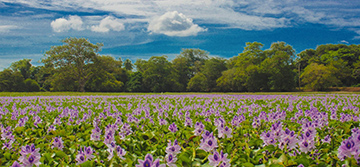
Anawilundawa Wetlands
Puttalam, Sri Lanka
Located near to Kalpitiya, Anawilundawa (meaning ‘seven wetlands’ in Tamil) refers to a cluster of freshwater tanks within the sanctuary. It is a very important wetland for many migratory birds.
Duration: 4 hours
Best time: October to April
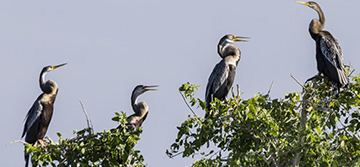
Bundala & Tissa Wetlands
Bundala national park, bundala, Sri Lanka
Bundala & Tissa wetlands combine 20km of beach, lagoons and scrub hosting more than 150 bird species and should delight bird lovers in Sri Lanka.
Duration: 4 hours
Best time: October to March

.jpg)
.jpg)
.jpg)
.jpg)
.jpg)
.jpg)


